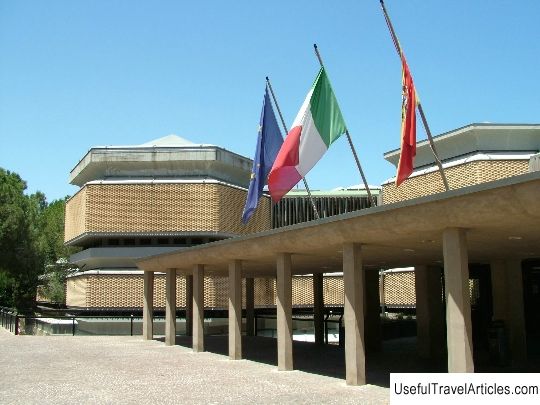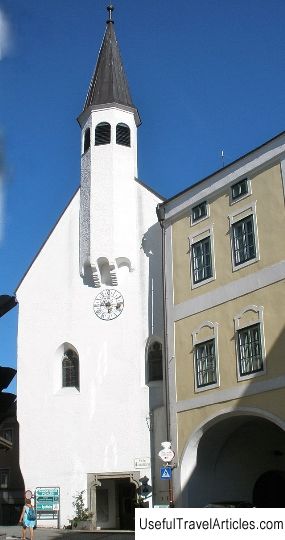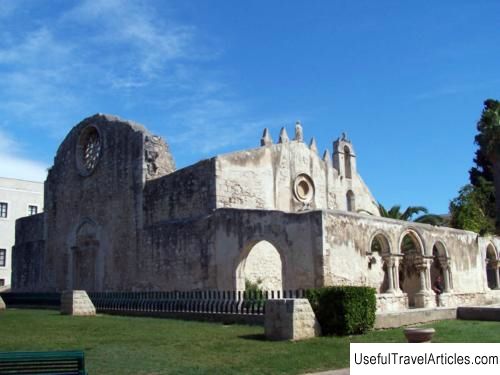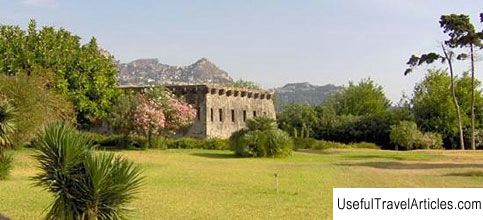Archaeological Museum of Paolo Orsi (Museo Archeologico Regionale “Paolo Orsi”) description and photos - Italy: Syracuse (Sicily)
Rating: 7,9/10 (221 votes) 
Archaeological Museum of Paolo Orsi (Museo Archeologico Regionale “Paolo Orsi”) description and photos - Italy: Syracuse (Sicily). Detailed information about the attraction. Description, photographs and a map showing the nearest significant objects. The title in English is Museo Archeologico Regionale “Paolo Orsi”. Photo and descriptionThe Archeological Museum of Paolo Orsi (Museo Archeologico Regionale “Paolo Orsi”) bears the honorary title of one of the most significant thematic museums in Europe. It is located in Syracuse near the Archbishop's Palace. & Nbsp; In 1780, the Bishop of Alagon inaugurated the Seminary Museum, which almost thirty years later became the City Museum. Then, in accordance with a royal decree of 1878, the creation of the National Archaeological Museum of Syracuse was approved, which, however, was only opened in 1886 in a historic building in Piazza Duomo. From 1895 to 1934, the director of the museum was Paolo Orsi, an outstanding Italian archaeologist, researcher of the prehistoric and ancient periods of Italian history. The growth of museum collections soon required larger premises. The construction of the new building was entrusted to the architect Minissi, who chose an area for this near the picturesque Villa Landolin. The grand opening of the new museum, which placed its exhibits on two floors with a total area of 9 thousand square meters, took place in January 1988. Initially, only one of the two floors and a semi-basement with an area of 3 thousand square meters were opened to the public, which housed the audience. In 2006, the exhibition area of the upper floor was expanded to house collections dedicated to the period of antiquity and the Roman Empire. Today, the museum contains artifacts from the prehistoric period and up to the Greek and Roman eras. All of them were found during archaeological excavations carried out in the territory of Syracuse and in other parts of Sicily. The first floor is divided into three sectors, and its central part is devoted to the history of the museum itself. Sector A contains artifacts dating from the Upper Paleolithic and the Iron Age - mostly fossils that testify to the presence of various forms of life in Sicily at that time. Sector B is dedicated to the period of the Greek colonization of the island: there is a marble decapitated statue of a young warrior from Leontinoi, dating from the beginning of the 5th century BC, a statue of a woman breastfeeding two twins found in Megara Eblaya, temple figurines of Demeter, Persephone and Gorgon , the head of the emperor Augustus, the amazing sculpture of Venus Landolin, found in 1804, etc. In sector C, finds are exhibited from the colonies of Syracuse - Acraia, Casmenai, Camarina and Eloro, as well as from other cities of eastern Sicily and from Agrigento. Finally, sector D was opened in 2006 - it contains exhibits from the Hellenic-Roman periods, including the magnificent Adelphia sarcophagus and a collection of coins. Not far from the Archaeological Museum is the ancient Villa Landolina, and next to it is a park with Roman and Greek finds and the grave of the German poet August von Platen.        We also recommend reading Sretenskaya church of the Pskovo-Pechersky monastery description and photos - Russia - North-West: Pechory Topic: Archaeological Museum of Paolo Orsi (Museo Archeologico Regionale “Paolo Orsi”) description and photos - Italy: Syracuse (Sicily). |




